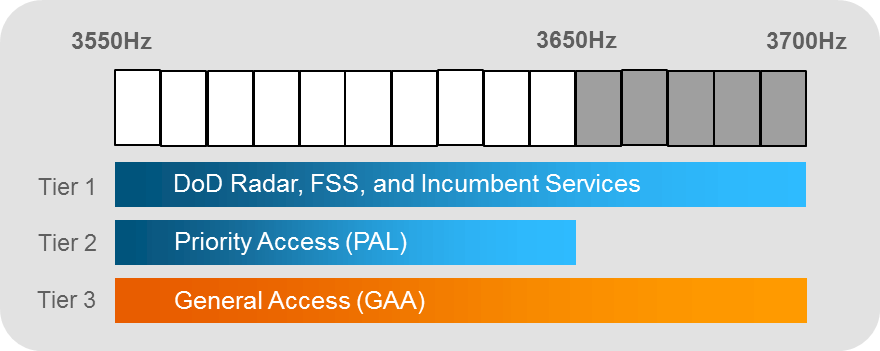
Today’s post is written by Greg Kamer, a consulting systems engineer for Ruckus Networks. Greg has been in the IT industry for many years and has been with Ruckus for six of them, executing wireless deployments large and small.
In wireless technology, spectrum is king. There is an insatiable appetite for using the air for more – specifically data and IoT applications. In order to satisfy the demand, the FCC has begun the process of opening up an additional 150 MHz of spectrum that can be, in most instances, used without much fuss.
The solution proposed in this instance is called Citizens Broadband Radio Service (CBRS), but the CBRS Alliance calls the technology OnGo. The spectrum is available in the 3.5 GHz space, from 3550 MHz to 3700 MHz. In the past, this frequency range was allocated to the US Navy for ship-to-shore communications. As you might imagine, most of the mainland US (even many coastal regions) didn’t see any use of this spectrum by the Navy. Since it’s widely unused, there are other great applications for it, like a private or in-building LTE network. In the past, LTE hasn’t been available for private use other than to the large carriers that had the cash to spend on relatively small chunks of spectrum.
The Spectrum Breakdown

There will be three tiers of service for CBRS, the first being allocated to the Navy and other incumbent services. Those will always have priority for use of the spectrum.
The second, known as Priority Access License (PAL) will be auctioned for use in certain areas. These licenses will give priority access to the spectrum, but not exclusive. As shown in the graphic above, the entirety of the spectrum cannot be licensed.
The final tier, and the most common, is called General Authorized Access (GAA). This tier will be available to anyone, free of charge. The allocation of spectrum, regardless of PAL or GAA, will be governed by the Spectrum Access System (SAS) and be thought of in terms of DHCP. When a radio boots up, it will contact the SAS, report GPS coordinates and then will be assigned a channel to use at that time. While this won’t guarantee 100 percent clear spectrum for that channel, it goes a long way to making the most of the channel you have been given and limits the number of access points surrounding your area, which is an all-too-common interference problem with Wi-Fi. The SAS will also ensure, per FCC regulations, that 80 MHz of the spectrum will be available for GAA use and all the coordination should happen in real time, thus preventing anyone from hogging the spectrum.
So What Will the Future Look Like with CBRS?
Now the everyday folks of the US will have access to this technology and there are many fantastic opportunities for the use of LTE in the everyday citizen’s hands. One very common and needed application is indoor cellular coverage and and/or augmentation. Think of how many times that you have been in a building, perhaps even your own home, and the cell signal is less than adequate. Once device makers adopt the technology more fully, you could relatively easily set up an access point in your home or work and provide coverage for all carriers if desired.
Now think of a large warehouse or a very large outdoor facility like a railyard that needs wireless coverage. Those can be very challenging areas to cover. They have constantly moving obstacles, large swaths of area, and devices constantly moving around. A private LTE network could provide many benefits here: seamless roaming, better battery life and greater coverage, just to name a few.
Ruckus Networks is pioneering how to bring CBRS’s OnGo technology to businesses who need it, like those railyards, warehouses or sports complexes. My next post will delve into Ruckus’s technology and plans for the future.